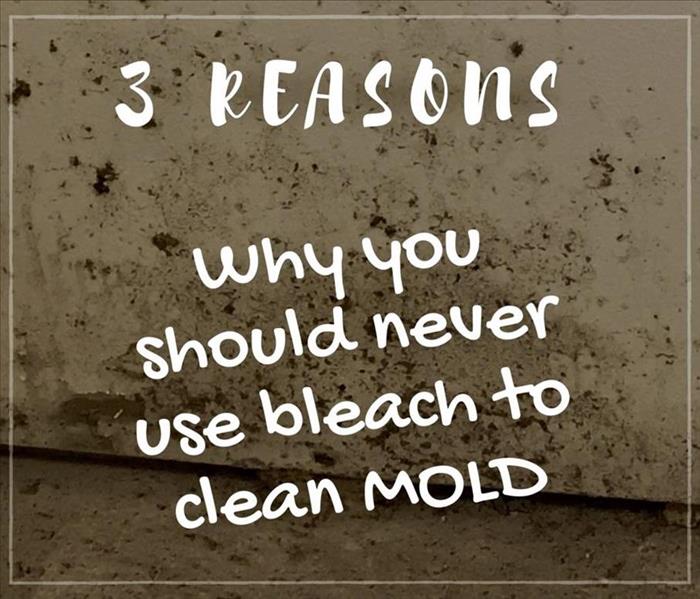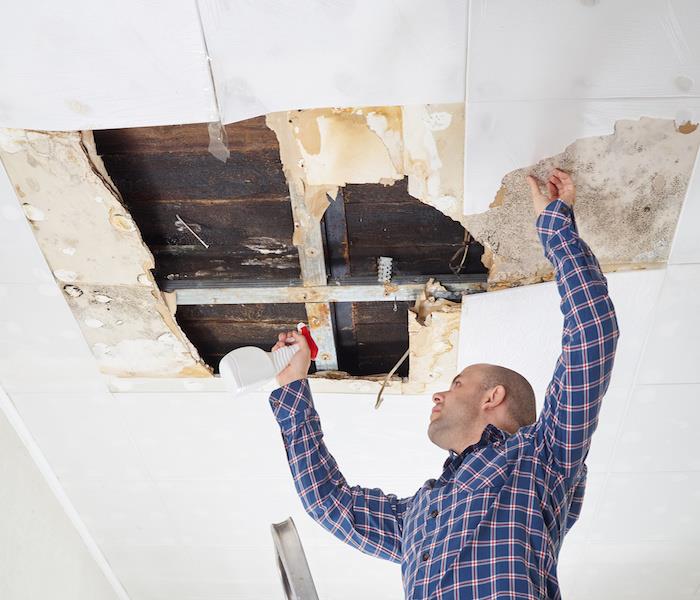Recent Mold Remediation Posts
Think You May Have Mold, But Can’t See Any
1/10/2022 (Permalink)
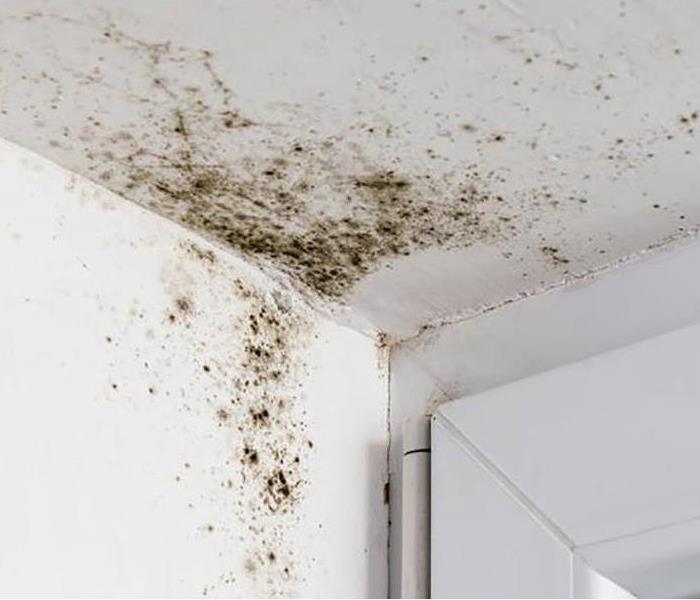 If there are no visible signs of mold, but think there may be somewhere behind the drywall or baseboards. Call us to help!
If there are no visible signs of mold, but think there may be somewhere behind the drywall or baseboards. Call us to help!
Do you think you have mold in your Florida home, but you cannot see any visible evidence anywhere? In this kind of situation, I would recommend hiring an Industrial Hygienist or more commonly known has mold inspectors.
How They Detect Mold
Industrial Hygienist are equipped with highly sensitive air testing equipment which will count the number of mold spores inside and outside of your house. If the mold spore count inside is higher than outside, than the air samples have confirmed your suspicion of mold inside your home. To consider your house to be a safe and normal environment, the mold counts inside your house must be lower than outside. Not only can the industrial hygienist find out if there is mold present but can also discover the area that is infected and the specific types of mold.
After the air samples are taken, they are sent off to a lab to be processed. The industrial hygienist will receive the results and provide you with a mold report and mold protocol. The mold report provides the information of the kind of mold and the affected area. The mold protocol explains the specific procedures needed, the types of protective equipment required, and tools.
Not every mold issue requires air sampling. If you can see mold, sampling is not necessary. Instead you should take the proper steps towards removing the mold including calling your homeowners insurance company and find out if you have mold coverage and start filing a claim. Once you have determined if insurance will or will not be involved in the mold remediation process, it is now time to hire a mold remediation company like SERVPRO.
When the mold removal process is complete, the industrial hygienist will return to take air sample again. This will insure that the mold issue has been eliminate from your house, and that the restoration company has returned your house to preloss condition.
Warning: Do not try to diagnose your mold problems with a home testing kit. The kits are not accurate and typically don’t work. They’ll probably reveal some mold, but only because spores are always flying in the air. (NOTE: It is impossible to eliminate ALL mold spores in the air.)
Home kits can’t:
- Guarantee a statistically significant sample of air.
- Confirm the presence of dead mold spores.
- Determine baseline levels of mold in your home to compare results with other non-mold-infected areas.
About Our Mold Remediation Services
SERVPRO of South Brevard specializes in mold cleanup and restoration, in fact, it’s a cornerstone of our business. Our technicians are highly trained restoration professionals that use specialized equipment and techniques to properly remediate your mold problem quickly and safely. We service the Florida residents of Rockledge, Viera, Suntree and Melbourne. Don’t hesitate to contact our West Brevard, Florida office staff to start getting your home back to the way it was, and our technicians and contractor will have your home look “Like it never even happened.”
Schedule a mold assessment at 321-777-5131
Mold can be hidden even in the cleanest areas.
11/2/2020 (Permalink)
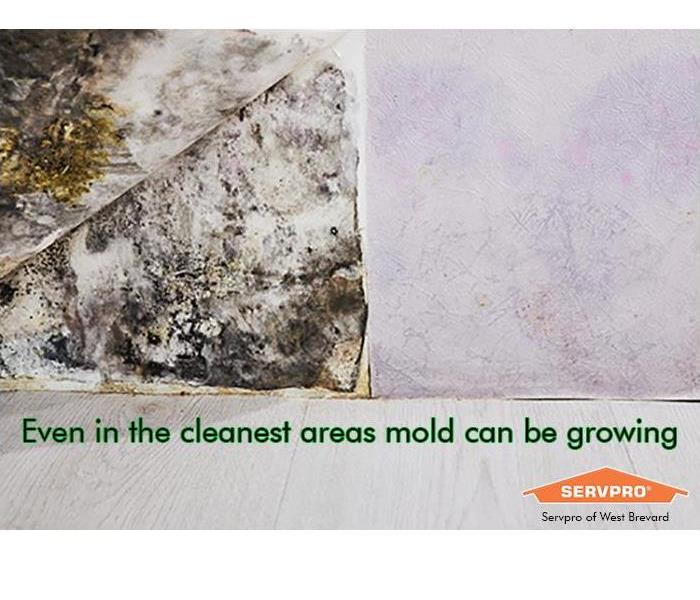 Mold behind wallpaper.
Mold behind wallpaper.
Did you know mold does not need to be visible to be growing? Even in some of the cleanest areas, it can be behind walls.
Most common places like bathrooms, closets, around the ac handler, kitchens, garages, even some exteriors.
Here are some facts:
- Mold can grow both indoors and outdoors
- It can start with just moisture
- It can grow anywhere inside your area without you seeing it.
- Some of the most common areas for mold is around the AC Handlers, Water heaters, Bathrooms, Closets, and Garage.
- Drying out the area after it has been flooded it will not stop the mold from growing.
- There are several types of Molds
Think you got mold growing in your home, business, or offices call our team of experts.
3 Steps To Banish Black Mold From a Shower
7/30/2020 (Permalink)
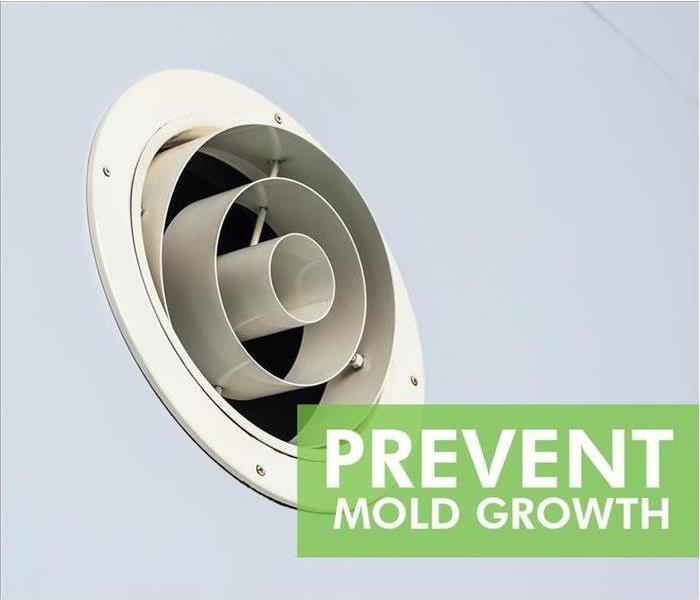 Bathrooms with a shower should be properly ventilated to prevent mold growth due to humidity
Bathrooms with a shower should be properly ventilated to prevent mold growth due to humidity
3 Steps to Prevent a Shower Becoming Moldy
Showers combine all of the elements mold needs to thrive. Heat, moisture and organic material can support many types of shower mold. Take these three steps to prevent a shower from becoming moldy.
- Increase Bathroom Ventilation
Mold thrives in environments with limited air circulation. Ventilation promotes faster drying, which reduces residual moisture levels that support growth. Make sure the ventilation fan you install is rated for the square footage of a bathroom.
- Regularly Clean Showers
Cleaning a shower can help to prevent shower mold from becoming a problem. Mold requires organic material for nutriment, and is less likely to grow if you regularly eliminate buildup from a shower. It can also be helpful to remove excess water from the walls or door of a shower with a squeegee.
It is a good idea to clean and scrub shower surfaces at least once a week, scrub grout once or twice a month, and periodically treat the shower with a fungicide cleaner or a solution of one part bleach to nine parts water.
- Maintain Grout Sealant
Scrubbing grout is necessary to remove mildew or mold, but abrasion will also wear down the seal over time. When the grout between tiles or around the base of the shower wears out, this can lead to leaks that allow water to penetrate behind walls or spill out onto the floor of a bathroom. Check the condition of grout every few months and reseal when necessary.
These three preventative measures can help to stop the growth of shower mold. If you can still smell a musty odor after taking these steps, water may be leaking behind tiles and collecting in wall cavities. Do not search for hidden mold on your own. Black mold may be present, and some species are toxigenic. Contact a service that offers mold testing and remediation in Eau Gallie, FL.
Industrial Hygienists Locate and Document Mold Infestation
6/9/2020 (Permalink)
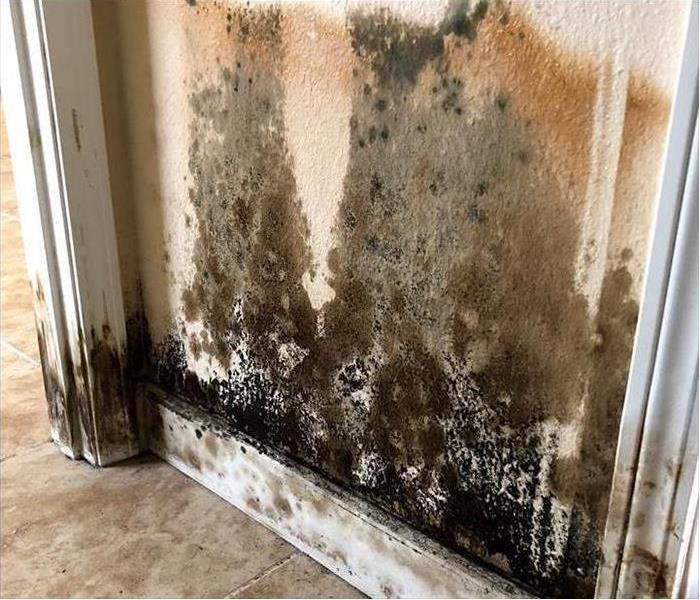 If your home in the Sebastian, FL, area suffers from a mold infestation, it’s time to pick up the phone
If your home in the Sebastian, FL, area suffers from a mold infestation, it’s time to pick up the phone
Industrial Hygienists Are Mold Infestation Experts
Industrial hygienists also go by the name environmental hygienists. A hygienist can evaluate your mold problem, create a report and explain the findings. The report includes types of mold present, the infested locations and the severity of the infestation.
When it comes to insurance, the hygienist’s report plays a crucial role. The insurance adjuster uses the report to determine a course of action for mold cleaning. Insurance companies depend on the expert opinions of Certified Industrial Hygienists. Without an expert evaluation, a successful cleanup is difficult.
Mold Cannot Hide From Industrial Hygienists
One might think that a hygienist is someone who walks through your home with a clipboard and takes notes. That certainly part of the job. Don’t be surprised when the gloves, mask and tools come out. The hygienist’s job is also to find mold wherever it hides. The job includes removing wallboard and searching crawlspaces to discover mold’s hiding places.
If your home in the Sebastian, FL, area suffers from a mold infestation, it’s time to pick up the phone. There are local certified hygienists and mold remediation specialists who are ready to evaluate your mold problem and begin the mold cleaning process right away. They are here to help.
3 Valuable Items You Can Save From Mold
9/22/2019 (Permalink)
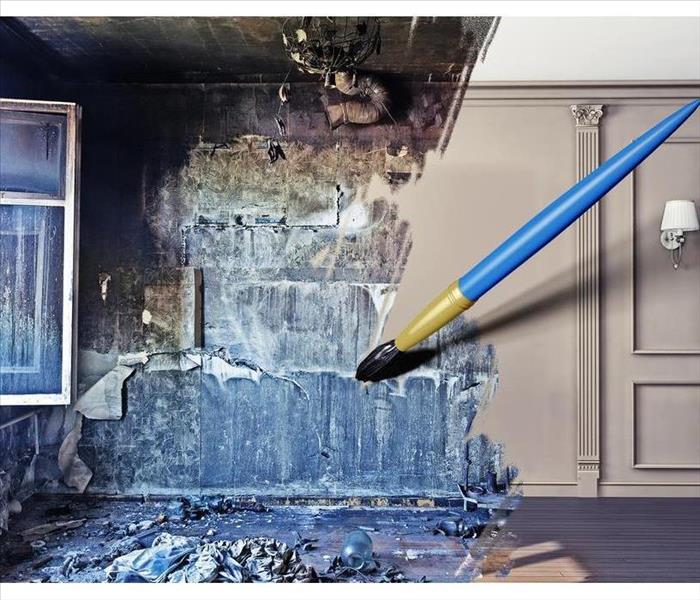 Humidity can ruin pictures and art
Humidity can ruin pictures and art
3 Valuable Items You Can Save From Mold
Mold does not discriminate regarding where it grows and the damage it leaves to your valuables. Even if you avoid water exposure or natural disasters in Port Malabar, FL, there is still a chance mold can grow from the combination of spores and humidity. While it can devastate many of your prized items, mold cleaning can save some of them depending on the materials and the level of damaged inflicted on them.
Cloth Items
Several useful items around your house are made from cloth. Fortunately, many of them are salvageable.
- Clothes (especially made from fabric)
- Bed items (pillows, mattresses, blankets, etc.)
- Stuffed animals
- Curtains
- Other decorations
You may be able to clean and restore them if the mold is only surface-deep and mold damage has not compromised them. Damaged cloth cannot be fixed. The items also have different mold cleanup procedures depending on the material.
Paintings
Whether you are a dedicated artist, or you simply collect and display art, it can be heartbreaking to see mold on your paintings. However, you do not have to throw them away yet, as mold cleaning is possible, if somewhat difficult. Paper is a porous, delicate material that can tear easily, and paint can react differently to mold and repair attempts. A mold repair specialist can distinguish between acrylic, watercolor and oil paints, then use the appropriate tools and techniques to bring the paintings back to their previous state.
Appliances and Electronics
As technology continues to make life convenient, electronic appliances, gadgets and other items remain an important part of the household. While you may think their exposure to mold makes them worthless, items spared from water or moisture can still be cleaned. You must make sure that mold has not touched and damaged their inner components. A mold remediation service specialized in electronics can assist you with this task.
Mold may strike your possessions through unexpected incidents or chemical reactions. Thankfully, the right mold cleaning service can bring new life to them.
Dealing With Mold In Your Apartment: Here's What You Need To Know
7/30/2019 (Permalink)
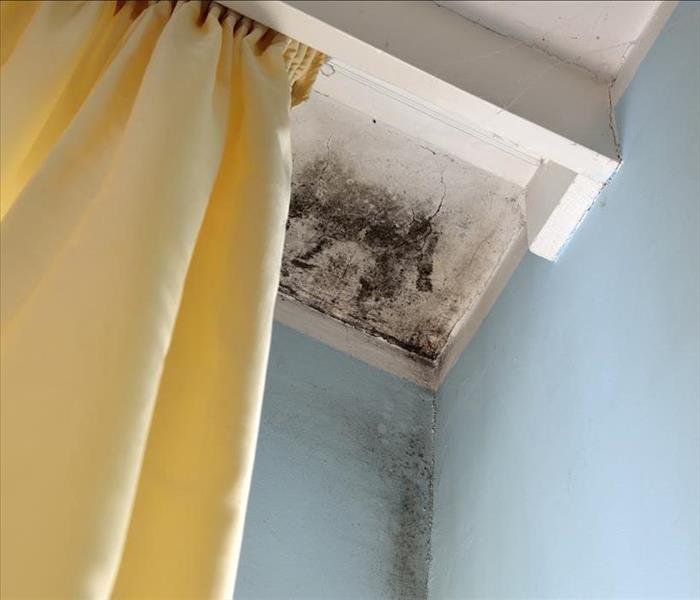 Mold damage in an Indian Harbor Beach, FL apartment
Mold damage in an Indian Harbor Beach, FL apartment
Steps To Take When You Discover Mold In Your Apartment
Your landlord has a duty to provide you with a clean and habitable place to live. While mold is not necessarily dangerous, it is unnerving to look at and, for some people, it can aggravate allergy symptoms. Then there is the fact that mold can wreak havoc on a building's structure and personal belongings. For all these reasons and more, if you discover mold in your apartment, you should contact your landlord, who should then call in an Indian Harbor Beach, FL, mold cleanup crew. Below are the steps you should take upon discovering mold contamination in your apartment:
- Contact your landlord.
- Take pictures of the infestation and send them to your landlord.
- Make sure you're home when the mold remediation specialist arrives.
- Make sure your landlord has an air quality test performed to ensure mold spores aren't in other areas of the unit or home.
Once the tests are complete, the mold remediation specialist will begin the mold remediation process.
What To Do If Your Landlord Won't Cooperate
Unfortunately, some landlords are not as cooperative as they should be. If your landlord ignores the issue or flat-out refuses to help with the mold cleanup process, there is a specific way you should handle the situation.
First, contact an attorney. An attorney can advise you on how to proceed as well as inform you of your legal rights. After you contact an attorney, make copies of everything. This includes written notices, photos and receipts of costs you incurred trying to resolve the issue on your own.
Next, schedule an indoor air-quality test. You will need these results to prove that the conditions in your home are a threat to your health.
Finally, file a lawsuit. If you win, you may receive a reduction in rent, one month's free rent, a civil penalty of $500 and actual damages. If you hired an attorney, your landlord will also have to pay for the attorney fees.
If there is mold in your rental unit, your landlord is responsible for mold cleanup. He or she should contact a professional mold remediation company.
Advantages of Hiring a Hygienist to Check for Mold
1/21/2019 (Permalink)
 Mold detector
Mold detector
It’s not uncommon to find mold in your house. Factors such as humidity, flooding, leaky pipes and condensation can lead to mold growth. Once you identify this issue, it’s essential to start the mold cleaning process as soon as possible. However, it’s not always easy to find mold. This is why you should hire a hygienist to inspect your Palm Bay, FL, home for this concern.
What Does a Hygienist Offer?
You may think that uncovering mold and finding mold damage is simple and that anyone could do it. While there are cases where you can easily identify mold, it’s best to hire a hygienist if you want an accurate result.
- Hygienists have experience.
- Hygienists use proven techniques.
- Hygienists have the skills and credentials.
Experience Maters
For something as serious as mold remediation, you don’t want to trust the issue to a novice. There’s too much at stake for yourself, your home and your family. A proven expert is your key to accurately finding whether there’s mold in your house and where it may be hiding. A hygienist have successfully searched for and found mold in homes and building numerous times. No matter what challenges your situation presents, the hygienist will have experience overcoming them.
The Best Equipment
Mold damage can be severe, so it’s important to spot it early on. A hygienist does employ guesswork or use a hunch to uncover mold in your house. This expert use industry-leading techniques to accurately find where this unwanted guest is hiding.
Certified and Trustworthy
When an expert has gone through the proper training for certification, don’t you trust his or her work a little more? If you want to begin mold cleaning in a timely manner, you need to know for sure this fungus is growing in your home. Certified hygienists will assure you that the findings are accurate and that you’re working with a person you can feel good about.
Mold cleaning and remediation is an important step to eliminating mold from your home. You can have peace of mind when a hygienist checks your place for this substance.
4 Tips To Keep Your Bathroom Mold-Free
9/11/2018 (Permalink)
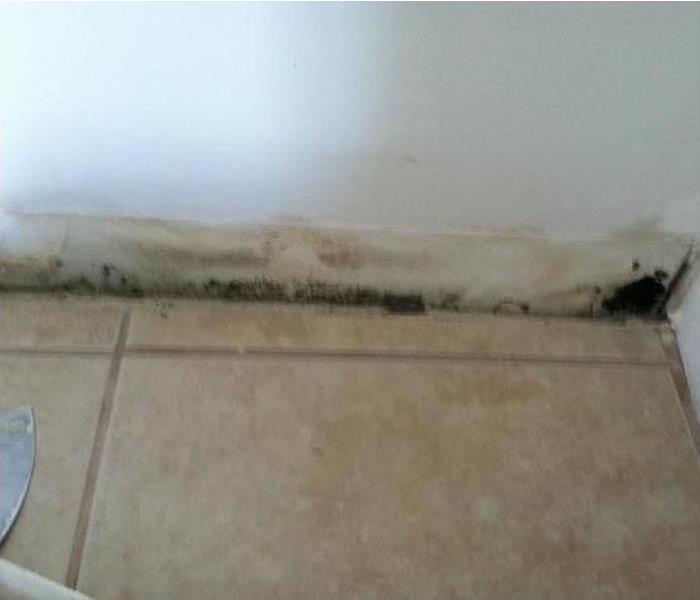 Mold damage on bathroom in a Melbourne, FL home
Mold damage on bathroom in a Melbourne, FL home
Bathrooms are a breeding ground for mildew and mold. With moisture and heat constantly surging through your Melbourne, FL, bathroom, it can seem like an insurmountable task to keep it fresh and dry. Luckily, bathroom mildew is preventable.
Here are four tips to keep your humidity problem at bay.
1. Always run your bathroom fan while showering or bathing. Introducing more airflow into your bathroom with the use of your built-in bathroom fan is the easiest way to prevent mildew. Keep your fan running for the duration of your shower and for at least half an hour after for maximum results. With increased ventilation, the majority of moisture in your bathroom should dissipate quickly.
2. After you’re finished with your shower, remove moisture from your shower surround. It’s easy to get rid of a good portion of post-shower wetness with an inexpensive squeegee tool. One pass with your squeegee across your shower walls and your humidity problem will literally be heading down the drain.
3. Keep your bathroom caulking fresh. After years of being exposed to moisture, the caulk lines around your bathroom tile, tub surrounds and shower doors may not be as secure as they once were. It is important to always check your caulking for bathroom mildew and mold while you clean. To prevent them, try to use heavy-duty cleaning products on and around your caulk lines regularly, such as a bleach-based or ammonia-based cleanser.
4. Contact mold remediation at the first sign of mold. When you do find spots of mold that have spread to a larger area in your Melbourne, FL, home, don’t risk furthering the damage with DIY removal techniques. Call your local mold remediation and removal company to take care of it right the first time.
Definitely call in professionals if you find mold in your home. However, by following these simple steps to prevent bathroom mildew, your humidity problem can be a thing of the past.
What is Black Mold?
3/22/2018 (Permalink)
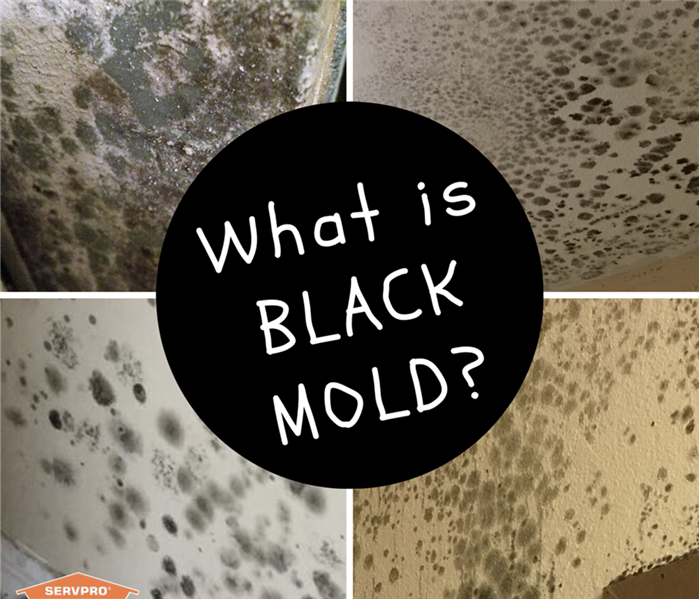 Since many types of mold can cause reactions, you should contact us regardless of the color or type of mold. Never try to remove mold yourself!
Since many types of mold can cause reactions, you should contact us regardless of the color or type of mold. Never try to remove mold yourself!
Black Mold is the name commonly used for stachybotrys chartarum. It is one of the most infamous mold because it can grow in any type of building and affect animals and individuals differently. Nevertheless, not all mold that appears black is the toxic black mold, stachybotrys chartarum.
Stachybotrys is known as a toxic mold because it produces toxins called mycotoxins. SERVPRO of South Brevard and our highly trained technicians can help eliminate your mold issues from your home or commercial building.
What Does Black Mold Look Like
Black mold is a greenish-black gelatinous mold. It usually appears slimy, because of a wet layer on the top. However, if the water source that helped produce the toxic black mold drys up, it can look powdery and dry-like.
Do I Have Black Mold?
There are quite of few types of molds that look similar to toxic black mold. The only way anyone can be certain stachybotrys chartarum is present is to have an environmental hygienist come and take air sample, which they will send to a lab. There, they will produce a mold report that will state the exact type of mold and the precise amount of mold spores present.
If you visible see mold, but are unsure if it is truly mold, SERVPRO of South Brevard’s team come out and perform a FREE mold assessment.
About Our Mold Remediation Services in Brevard County, Florida
SERVPRO of South Brevard specializes in mold remediation, in fact, it’s a cornerstone of our business. Our highly trained technicians are restoration professionals that use specialized equipment and techniques to properly remediate your mold issue quickly and safely. We service the residents of Melbourne Beach, Indianlantic, Satellite Beach, Melbourne, and Palm Bay. Contact our office staff if you think your home or office may have mold. Schedule a FREE Mold Assessment at 321-777-5131
What to Do if You See Mold: The Do's and Don't
1/22/2018 (Permalink)
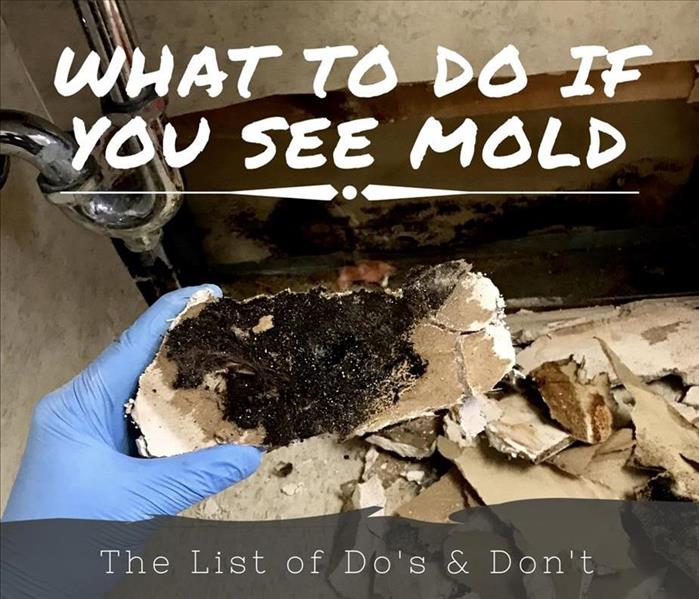 Do you know what to do if you see mold anywhere in your house? Don't worry! Here is the list of what you should and shouldn't do.
Do you know what to do if you see mold anywhere in your house? Don't worry! Here is the list of what you should and shouldn't do.
Mold occurs when there is an excess amount of moisture or water present, and can grow on virtually anything. Therefore, the purpose of mold remediation is to correct the moisture problem and to rid the structure of moldy or contaminated materials. This will prevent human exposure to the mold and any further damage to the building materials or furnishings.
If you see visible mold, do not disturb it. You can inadvertently spread the mold infestation throughout your home. When mold is disturbed, the mold can release microscopic mold spores which become airborne and can circulate inside your home.
What to Do:
- Stay out of affected areas.
- Turn off the HVAC system and fans.
- Contact SERVPRO of South Brevard to schedule an evaluation for mold remediation services.
What Not to Do:
- Don’t touch or disturb the mold.
- Don’t blow air across any surfaces with visible or suspected mold growth.
- Don’t attempt to dry the area yourself.
- Don’t spray bleach or other disinfectants on the mold.
If you have mold in your Melbourne home, it’s important that you have the professionals at SERVPRO of South Brevard handle the cleanup or remediation. The process of cleaning up mold can be complicated and dangerous if you’re not trained to do the job properly.
About Our Mold Remediation Services
SERVPRO of South Brevard specializes in mold cleanup and restoration, in fact, it’s a cornerstone of our business. Our technicians are highly trained restoration professionals that use specialized equipment and techniques to properly remediate your mold problem quickly and safely. We service the residents of Melbourne, Palm Bay, and all beachside towns, including Satellite, Indian Harbour, Indialantic, and Melbourne Beach. Don’t hesitate to contact our office staff to start getting your home back to the way it was, and our technicians and contractor will have your home look "Like it never even happened”. Call today at 321-777-5131
3 Signs Mold May Be In Your House
10/20/2017 (Permalink)
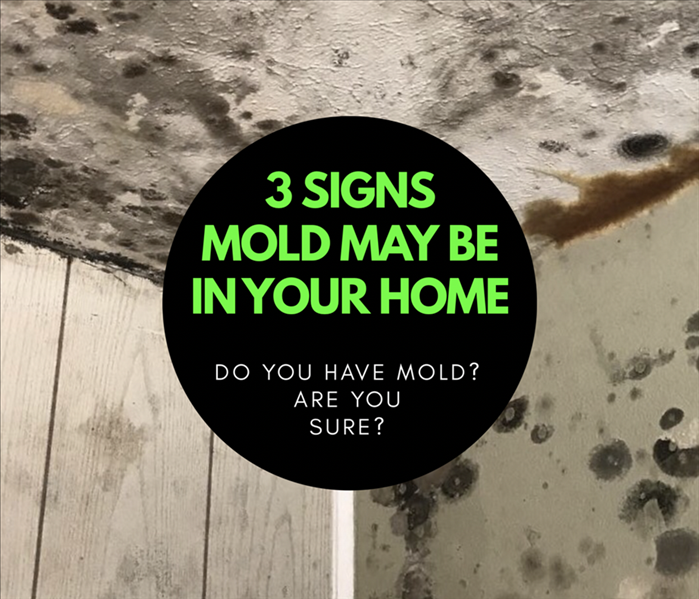 How can you tell if there is mold in your home? Here are 3 signs to help you identify mold.
How can you tell if there is mold in your home? Here are 3 signs to help you identify mold.
Florida can be known for the hurricanes that come through, and the humidity that is always so high. With that combination, it is a recipe for mold especially for homes in Melbourne Beach and Satellite Beach here in Brevard County. While we all want to think that will never happen to “MY HOME” the chances are that if you don’t know what signs you are looking for, how do you know if you have mold or not. Mold can be sneaky or even right under your nose and not know it. While hiding under carpet and behind drywall, you may never even see the mold, but here are some signs that can help you identify if mold is in your home.
Musty, Pungent Smell
Even if you cannot see the mold, doesn’t mean it is not there. If you notice this unpleasant smell when you enter a room, be sure to thoroughly check. You can even take an extra step and hire an industrial hygienist, who will perform several different mold tests that will ensure if you have mold or not.
Visible Dark Rings & Spots
The appearance of dark rings or spots on drywall or sheetrock is early signs of mold lurking in your home.
Visible Growths & Odd Colors
Mold can come in a range of colors other than the most popular “black mold”. You may notice dark, furry growths that are orange, brown, green and even white.
3 Reason Why You Should Never Use Bleach to Clean Mold
8/24/2017 (Permalink)
Chlorine Bleach is often regarded as the answer for stopping mold growth and removing the mold. However, this is a myth. Bleach does not exonerate mold. Here are three reasons why bleach is not the answer to mold, and should never be used to clean a mold contaminated area.
1. Bleach Loses Effectiveness Over Time
Chlorine bleach can dissipate rapidly, causing the bleach to be less effective. Over time this occurs because chlorine can evaporate and even faster in areas that are above room temperature. When the chlorine disappears, the bleach bottle turns into a bottle of salt water.
2. Bleach can actually contribute to mold growth
Chlorine bleach was made to clean surfaces, therefore can only kill surface bacteria and mold. This is due to bleach’s ion structure, which prevents the chlorine from penetrating porous material such as wood and drywall. When mold grows in porous areas, the enzyme’s roots grow deep within the material, rendering the bleach ineffective of exterminating the mold. The bleach can only remove the green stain from the mold, allowing surface to appear clean. But underneath the surface, the water component of the bleach penetrates and helps the internal roots to continue to grow, causing mold to reappear.
3. Bleach is Toxic
Bleach emits harmful fumes that pollute the air we breathe and can become harmful to humans and even pets. Over a period of time, inhaling the gases bleach emits can deteriorate the lungs and esophagus lining in addition to the scarring of the respiratory tract, which occurs in earlier stages. Also research shows that household bleach is one of the leading causes of accidental poisonings in the United States.
Here in Melbourne and Indian Harbor Beach, Florida, the risk of having mold in your home is a lot higher than other states. Why? Two words… heat and humidity. Mold thrives in dark, moist areas, and Florida’s humidity only helps that process. That’s why if you experience water damage and don’t take care of it the right way and in the first 48 hours; mold will begin to grow.
Common Household Molds & Your Health
7/28/2017 (Permalink)
Mold spores are everywhere in our environment and can enter our homes easier than you would think. Most types of mold grow quickly, if they have a water source, an organic food source and temperatures between 60 and 86 Fahrenheit. Since many Florida homes may have 1 or 2 of these characteristics, especially in the bathrooms, we need to know what to look for in regards to common household molds, and how they affect our health.
Cladosporium
- Characteristics: green, brown, grey, or black; powdery appearance.
- Where it Grows: on food, dead plants, wood, insulation, and dark, damp environments.
- Health Effects: can cause severe allergic reactions, and harmful for people with asthma, allergies, or weakened immune systems.
Aspergillus
- Characteristics: grey, brown, yellow, green, white, or black and grows quickly.
- Where it Grows: on walls, insulation, soil, clothing, and humid, moist areas.
- Health Effects: can cause infections in people with weak immune systems, or produces a carcinogen called aflatoxin.
Penicillium
- Characteristics: green, white, or blue; fuzzy appearance.
- Where it Grows: on food, walls, insulation, and moist, organic matter.
- Health Effects: irritates the stomach if ingested; airborne spores can cause congestion, coughing and/or eye irritation.
Alternaria
- Characteristics: dark green, grey, or black; long, velvety hairs; doesn’t need much water to grow.
- Where it Grows: on carpets, clothing, around windows, and damp areas such as flooded houses.
- Health Effects: can cause respiratory problems, asthma, or hay fever.
Stachybotrys, known as “Toxic Black Mold”
- Characteristics: dark green, or black; slimy
- Where it Grows: on walls, ceilings, floorboards, and any moist area.
- Health Effects: may cause cancer, headaches, asthma, dizziness, or joint pain.
Memnoniella
- Characteristics: dark green, or black; smaller than stachybotrys
- Where it Grows: on cotton, canvas, wool, ceilings, walls, or damp areas.
- Health Effects: can cause respiratory problems, headaches, or coughing.
If your have questions about mold check out Mold Remediation FAQs
Mold Cleanup Methods
5/2/2016 (Permalink)
If you have mold in your home, it’s important that you have the professionals at SERVPRO handle the cleanup or remediation. The process of cleaning up mold can be complicated and dangerous if you’re not trained to do the job properly. Also, due to the fact that dead mold can still be dangerous to your health, it must be removed rather than killed.
Mold typically occurs in buildings when there is an excess of moisture or water present and can grow on virtually anything. Therefore, the purpose of mold remediation is to correct the moisture problem and to rid the building of moldy or contaminated materials. This will prevent human exposure to the mold and any further damage to the building materials or furnishings.
If porous materials have become wet causing mold to grow on them, they may need to be discarded because molds can penetrate porous materials growing on or filling in the empty spaces or crevices. This type of mold can very difficult or seemingly impossible to completely remove.
Even in dead mold, chemicals and proteins that can cause a reaction in humans are present so killing the mold with biocide isn’t enough. It must be removed. There are a variety of cleanup methods that can be used to remediate potential damage to building materials and furnishings. Which method is chosen depends on the type of material that’s been affected by the mold.
Wet Vacuum
Wet vacuums are vacuum cleaners that are designed specifically to collect water. These can be used to remove water from floors, carpets, and hard surfaces where water has gathered. These vacuum cleaners are used on wet materials only as the spores could be exhausted into indoor environments if there isn’t enough liquid present. Any tanks, hoses, or attachments of the vacuum need to be thoroughly cleaned and dried because the mold or mold spores may adhere to equipment surfaces.
Damp Wipe
Wiping or scrubbing with water and detergent can usually remove mold from nonporous surfaces. The surfaces should be dried quickly and thoroughly to discourage further mold growth. Product labels have instructions for the cleaning surfaces which should always be read and followed.
HEPA Vacuum
High-efficiency particulate air (HEPA) vacuums are recommended for the remediation area’s final cleanup once the materials have been dried and all of the contaminated materials have been removed. For any dust that may have ended up on the surfaces outside of the remediation area, HEPA vacuums are recommended. When using the vacuum, the filter must be properly seated in the vacuum to ensure that air passes through the filters.
Remediators changing the vacuum filter should be wearing respirators, appropriate personal protective clothing, gloves, and eye protection in order to avoid being exposed to potentially captured mold or other contaminants. When finished, the filter and any contents must be disposed of in impermeable bags or containers which is important in preventing the release of any debris.
Disposal of Damaged Materials
For those building materials and furnishings that have been contaminated with mold growth and are not able to be salvaged will be placed in impermeable bags or closed containers while they remain in the remediation area. These materials can usually be discarded as ordinary construction waste. When discarding these mold-contaminated materials, they’ll be packaged to minimize the dispersion of mold spores.
Large items that have suffered heavy mold growth will be covered with polyethylene sheeting and will be sealed with duct tape prior to being removed from the remediation area. For some jobs dealing with large quantities of debris, dust-tight chutes place strategically outside a window in the remediation area might be required to move the debris to the dumpster.
Use of Biocides
Biocides are toxic to animals and humans so when using disinfectants or biocides, the room will always be ventilated using outside air. This will exhaust the air to the outdoors. If fans are used, the remediators will take care not to extend the zone of contamination by spreading the spores to other areas.
Since some biocides are considered pesticides, some states require that those applying these products in schools, commercial buildings, and homes be registered pesticide applicators. Any fungicides that are meant for outdoor use shouldn’t be applied indoors as they can be extremely harmful to animals and humans in an enclosed environment.
The existence of mold in your home can be a health risk to you and your family. The process of eradicating the mold is complicated and can cause more problems if it’s not done properly. If you have in your home, call the professionals at SERVPRO to ensure complete mold remediation.
Palm Bay Mold Remediation FAQs
6/18/2015 (Permalink)
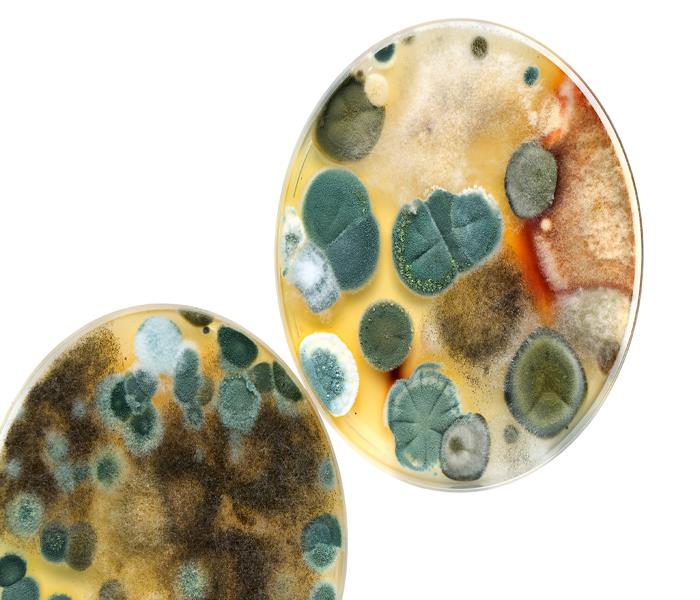 All fungi, like mold, release spores that travel along air currents.
All fungi, like mold, release spores that travel along air currents.
Mold Remediation FAQs
How harmful is mold to my health?
Depending on the type of Palm Bay mold and a person's immune system response, the mycotoxins released by the harmful types of mold can cause allergic reactions, including asthma, eye discomfort, skin rash and other irritations.
How do I identify a mold problem?
Check the air and surfaces in the area. If you notice a musty smell, then you have a mold problem. Additionally, different types of mold discolor surfaces with black and/or green specks. Look for mold in bathrooms, windows, crawl spaces, air conditioners, ventilation systems, leaky roofs, attics and basements.
Why have I found mold in several areas?
All fungi, like mold, release spores that travel along air currents. Unless a mold-infested area is sealed off, the spores spread throughout a building. Outdoor mold spores can also cling to the surfaces of people, pets and objects.
Why does mold grow in air ducts?
Poor duct maintenance and moisture from humidity or plumbing, wall or roof leaks give Palm Bay mold spores the perfect dark habitat for growth. The experienced team at CompleteDKI.com use time-tested techniques to remove any mold growth and fix the source of the problem.
Can I use bleach to remove mold?
Liquid bleach is the wrong choice for several reasons: Bleach can't successfully penetrate all surfaces -- especially some porous materials -- and since it is wet it will help any missed mold regrow. Worse yet, bleach can hide a deeply rooted mold problem from a mold restoration and remediation firm like SERVPRO.
Do I need additional testing if I already know that I have mold in my home?
Testing determines the type of mold and the amount of cleaning that must be done to completely restore an area.
Can I use a DIY test kit?
Although DIY kits are inexpensive, they often provide false positive results. They also don't offer the data needed to determine the type of Palm Bay mold or the amount of spores in the air.
How can I remove mold growth and spores from my home?
The best way is to hire a licensed mold remediation firm. Only a qualified and licensed expert, such as SERVPRO, can evaluate the problem and perform the correct tasks to remove mold from the air and surfaces, clean the infested area and safeguard against future growth.
Understanding Mold
Confusion and misunderstanding surround the topic of mold and mold remediation. Some restoration businesses even make claims to remove all mold from a building. This is a fallacy. Mold spores occur naturally almost everywhere, both indoors and outdoors. These microscopic spores float along in the air and can enter a home or business through windows and HVAC systems. Consider these facts:
- Mold is present almost everywhere, indoors and outdoors.
- Mold spores are microscopic and float along in the air and may enter your home through windows, doors, or AC/heating systems or even hitch a ride indoors on your clothing or a pet.
- Mold spores thrive on moisture. Mold spores can quickly grow into colonies when exposed to water. These colonies may produce allergens and irritants.
- Before mold remediation can begin, any sources of water or moisture must be addressed. Otherwise, the mold may return.
- Mold often produces a strong, musty odor and can lead you to possible mold problem areas.
- Even higher-than-normal indoor humidity can support mold growth. Keep indoor humidity below 45 percent.
 If there are no visible signs of mold, but think there may be somewhere behind the drywall or baseboards. Call us to help!
If there are no visible signs of mold, but think there may be somewhere behind the drywall or baseboards. Call us to help!






 24/7 Emergency Service
24/7 Emergency Service








